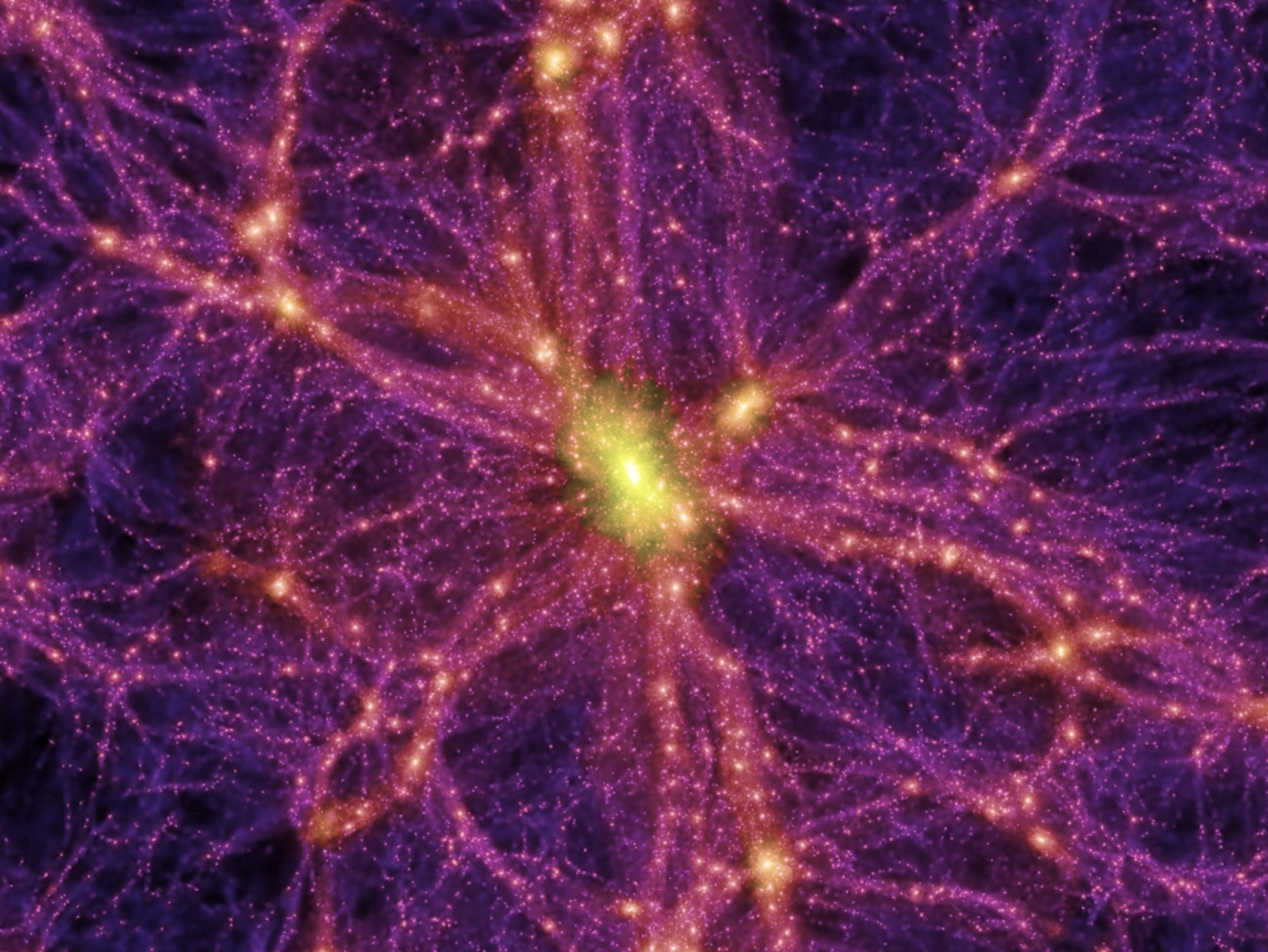
Axion Dark Matter: New Experiments Uncover Universe Secrets
Axion dark matter represents one of the most compelling theories in the quest to understand the universe’s unseen mass. These hypothetical particles are a leading candidate for dark matter, which accounts for about 85% of the cosmos yet remains elusive in direct detection. The recent advancements in quasiparticle experiments mark a crucial step in searching for axion particles, which could unravel many mysteries in particle physics research. By harnessing quantum technology, scholars aim to detect the subtle interactions of axions, potentially confirming their existence. As researchers delve deeper into the nature of dark matter, the implications of these findings could reshape our understanding of the cosmos and its fundamental components.
Examining the elusive components that potentially constitute the universe’s mass, axions, also known as hypothetical dark matter particles, have intrigued scientists for decades. As researchers search for dark matter, these peculiar particles have surfaced as prominent candidates, highlighting their significance in particle physics studies. Recent breakthroughs in quasiparticle technology propel our investigative efforts, allowing scientists to explore the properties and interactions of these mysterious entities. With ongoing particle physics research, the quest to comprehensively understand dark matter through axion particles has opened new avenues in the field of quantum science. Unlocking the secrets of these particles may not only illuminate the composition of the cosmos but also pave the way for revolutionary advancements in quantum technology.
Understanding Axion Dark Matter: Theoretical Foundations
Axion dark matter remains one of the leading hypotheses in the quest to explain the elusive nature of dark matter in our universe. Proposed as a theoretical particle in the 1970s, axions were initially introduced to solve the strong CP problem in quantum chromodynamics. These lightweight, neutral particles could potentially account for the missing mass in the cosmos, as their existence would allow them to exhibit properties aligning with the observations made about dark matter. Researchers in particle physics have been pursuing various experimental methods to confirm the existence of axions, which could revolutionize our understanding of the universe.
In recent years, advancements in quantum technology and experimental techniques have generated renewed interest in axion dark matter. Current research focuses on creating specific environments where axion particles may manifest, notably through quasiparticle experiments. The integration of cutting-edge technologies in the study of axion particles is crucial, as these interactions could lead to breakthroughs that increase our understanding of the fundamental building blocks of the universe.
Quasiparticles: A Gateway to Detecting Axion Particles
Quasiparticles represent an innovative approach in the search for axions, serving as simulators that can mimic the expected behavior of these hypothetical particles. In the groundbreaking experiments recently published, researchers focused on the use of quasiparticles derived from materials like manganese bismuth telluride. This research highlights how manipulating these materials at an atomic level can facilitate the detection of dark matter, specifically targeting the elusive axion. The ability to observe the dynamic nature of axion quasiparticles offers scientists new hope in capturing signals from dark matter, which has long evaded conventional detection methods.
The deployment of advanced laser techniques in measuring the properties of quasiparticles has marked a significant turn in particle physics research. For instance, capturing the movements and interactions of axion quasiparticles allows researchers to theoretically observe dark matter interactions in real-time. This innovative method could provide a more refined strategy for detecting dark matter axions, and could lead to novel technologies based on quantum mechanics, further enhancing our ability to search for and understand dark matter phenomena.
Innovations in Quantum Technology and Axion Research
The interplay between quantum technology and the search for axions illustrates a promising frontier in modern physics. By leveraging sophisticated tools such as ultrafast laser optics, researchers can create environments conducive to observing axion quasiparticles. This synergy not only aids in confirming the existence of axions but also contributes to the development of new quantum technologies that may have far-reaching applications beyond fundamental physics. As the field progresses, the potential for discovering groundbreaking technologies centered around this research becomes more pronounced.
Additionally, advancements in the design and engineering of quantum materials are essential for deepening our understanding of axion properties. The meticulous crafting of crystal structures as observed in manganese bismuth telluride reflects the ongoing efforts to harness quantum phenomena in practical applications. These innovations in quantum technology are strengthening the framework upon which researchers build their methods for probing dark matter and axions, indicating a promising trajectory leading toward potential discoveries in the near future.
The Role of Collaborative Research in Axion Studies
The success of axion dark matter research heavily relies on collaborative efforts among researchers from diverse backgrounds. The recent studies involving teams from Harvard, King’s College London, UC Berkeley, and other institutions underscore the power of interdisciplinary approaches in tackling monumental challenges in physics. This collaboration exemplifies how blending expertise from condensed matter physics, material science, and high-energy physics can accelerate advancements in our understanding of axion particles and their implications for dark matter.
Such cooperative research environments foster innovation and enable teams to share ideas and techniques that enhance experimental design and execution. As global collaborations become more integrated, researchers are not only making strides in discovering axions but are also contributing to a greater collective understanding of the universe’s fundamental structure. The pursuit of dark matter through axions has galvanized a new generation of physicists to work together towards a common goal in a way that can yield unprecedented insights.
The Future of Axion Research and Potential Discoveries
Looking toward the future of axion research, scientists hope to refine their experimental setups and delve deeper into the characteristics and potential existence of axion dark matter. With advanced technologies capable of narrowing the search parameters, researchers are optimistic about the timeline for potentially confirming axions as actual dark matter candidates. This enthusiasm is reflected in the comparative increase in activity around axion studies, likened to the research boom preceding the discovery of the Higgs boson.
Furthermore, as theorists propose new methodologies for detecting axion particles, the landscape of particle physics research is evolving. The development of highly sensitive measurement techniques that can discern the subtle signals emitted by axion particles could become a reality within the next couple of decades. As researchers continue to explore this fascinating area of study, the potential for groundbreaking discoveries looms large, driving a pivotal shift in our comprehension of dark matter and the universe at large.
Challenges in Experimental Methods for Axion Detection
Despite the promising advances in detecting axion dark matter, significant challenges remain. The inherent elusiveness of axion particles, due to their hypothesized low mass and weak interactions, presents formidable hurdles in experimental design. Ensuring that measurements can sufficiently isolate signals from axions in the presence of noise and other interference is crucial for the success of such experiments.
To address these issues, researchers are deploying innovative techniques and materials, like those derived from manganese bismuth telluride, to enhance the detection process. By overcoming these obstacles, physicists can improve the sensitivity and accuracy of their experiments, increase the likelihood of detecting axions, and contribute to resolving one of the universe’s most perplexing mysteries.
The Influence of Axion Dark Matter on Cosmology
Axion dark matter holds not just implications for particle physics, but for cosmology as well. Understanding axions could unlock secrets related to the formation and evolution of galaxies, as dark matter is critical to the gravitational scaffolding that shapes the universe. By unveiling the identity of dark matter, researchers can gain insights into the cosmic web and how it has evolved over billions of years.
Furthermore, the exploration of axion particles may enable cosmologists to develop comprehensive models that describe the universe’s expansion and the interplay between dark energy and dark matter. Such advancements could revise current cosmological theories and enhance our grasp of fundamental forces that govern the cosmos, ultimately leading to a more unified view of physics.
Axions and Their Connection to Fundamental Physics
The ongoing investigations into axions are vital not only for dark matter research but also for our understanding of fundamental physics. By theoretically exploring axions, scientists are delving into the core principles governing the universe and refining the Standard Model of particle physics. The potential discovery of axions can lead to a deeper appreciation of symmetries, interactions, and the role of mass in particle physics.
Moreover, the study of axions could yield crucial insights into the conditions present shortly after the Big Bang, offering a window into the transformations that shaped the universe. This fundamental research serves as a reminder of the intricate relationship between theoretical predictions and experimental validation, bridging gaps in our knowledge and potentially leading to revolutionary advancements in both theoretical and applied physics.
Integrating Axion Research with Quantum Technologies
As researchers forge ahead in the study of axions, the integration of this work with advancements in quantum technology becomes increasingly important. The unique properties of axions could lead to developments in quantum computing, secure communication systems, and other emerging technologies. By harnessing the fundamental aspects of axion particles, scientists can explore novel applications that extend beyond pure theoretical physics.
Such collaborations between axion research and quantum technology are expected to illuminate new pathways in both fields. As scientists continue to innovate and experiment, the potential for transformative breakthroughs becomes more tangible, emphasizing how the quest for understanding dark matter can invigorate advancements across a range of scientific disciplines.
Frequently Asked Questions
What are axions and why are they considered a candidate for dark matter?
Axions are hypothetical elementary particles proposed as candidates for dark matter, which is believed to make up approximately 85% of the universe’s mass. These particles were first theorized to solve the strong CP problem in quantum chromodynamics and may also provide insights into the nature of dark matter.
How are researchers searching for axion dark matter using quasiparticle experiments?
Researchers are utilizing quasiparticles, like those found in manganese bismuth telluride, as simulations of axion particles. By detecting reactions caused by dark matter axions on these quasiparticles, scientists aim to confirm the existence of axions and their role in dark matter.
What role do axion quasiparticles play in the study of particle physics?
Axion quasiparticles mimic the behavior of axion particles under scientific observation. They serve as a platform for researchers to test theories about axions and their potential to explain dark matter, shedding light on fundamental questions in particle physics.
What advancements have been made in axion dark matter detection technology?
Recent experiments have advanced the technology used for detecting axion dark matter by employing sophisticated techniques such as ultrafast laser optics. These advancements help capture the interactions of axion quasiparticles, providing insights for future detection methods.
How could axions influence our understanding of the universe’s composition?
If confirmed, axions could significantly enhance our understanding of the universe’s composition by explaining the nature of dark matter. They may reveal new aspects of physics, thereby helping to answer critical questions about the history and structure of the cosmos.
What are the potential implications of discovering axion dark matter for quantum technology?
Discovering axion dark matter could lead to novel applications in quantum technology, particularly in developing advanced quantum materials. It may open new avenues for innovative technologies, including improved sensors and detectors based on axion behavior.
What future experiments are planned to probe axion dark matter?
Future experiments aim to delve deeper into the properties of axion quasiparticles and refine detection conditions to better probe axion dark matter. Researchers aspire to create highly accurate detectors, potentially revolutionizing our capability to explore dark matter.
| Key Points |
|---|
| Axions are theorized particles that could explain dark matter, a significant component of the universe. |
| Groundbreaking research by Harvard and King’s College London attempts to detect axions through quasiparticles. |
| Axion quasiparticles can react in identifiable ways when impacted by dark matter axions, potentially confirming their existence. |
| Materials like manganese bismuth telluride were used to create ideal conditions for observing axion quasiparticles. |
| The techniques employed include ultrafast laser optics and precision nano-fabrication to reveal axion dynamics. |
| This research may provide new insights into dark matter detection and quantum technologies. |
| The team aims to refine their methods to improve precision in detecting axion dark matter. |
Summary
Axion dark matter remains one of the most tantalizing mysteries in physics, representing about 85% of the universe’s mass. With recent advancements in experimental techniques, researchers are getting closer to confirming the existence of axions, which could revolutionize our understanding of the universe. The innovative use of quasiparticles and precise experimental setups presents a promising pathway to not only detect dark matter but also unlock potential technological applications that could emerge from this research. As scientists continue to explore and refine their approaches, the journey toward revealing the nature of axion dark matter is accelerating, potentially leading to one of the most significant discoveries in modern physics.


